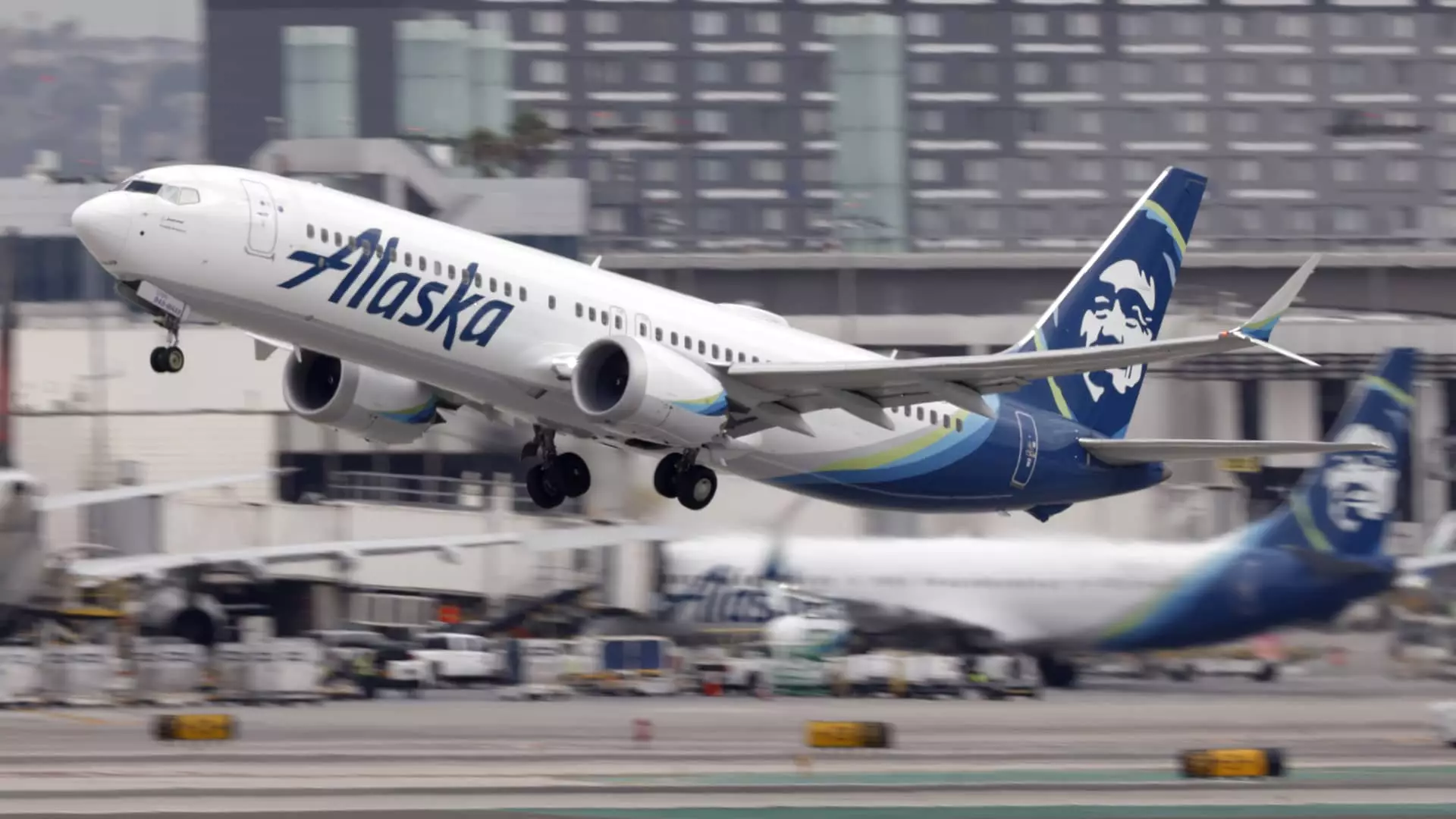Alaska Airlines’ latest push to create a premium credit card and merge its loyalty program with Hawaiian Airlines under the Atmos brand exemplifies a broader industry trend—one driven more by necessity than genuine consumer demand. While the airline touts these initiatives as enhancements for its most loyal customers, beneath the surface, they reveal a desperate attempt to carve out an exclusive niche in a saturated market. The move to introduce a $395-a-year premium card with generous perks, like lounge passes and discount fares, suggests that Alaska recognizes that its core product may not be enough to retain high-value travelers. Instead of substantial service differentiation, the airline relies heavily on branded perks that are, at best, superficial in creating true customer loyalty.
What actually underpins these efforts is a recognition that the industry’s traditional revenue models are under threat. Airlines face relentless pressure from budget carriers, whose aggressive strategies are eroding market share, especially among middle-class travelers who demand competitive prices and reliable service. The glamour of upgraded cabins and exclusive lounges may entice some travelers, but it’s ultimately a band-aid over a deeper issue: the industry’s inability to sustainably differentiate itself on service quality alone. Alaska’s emphasis on “luxury” and “exclusivity” highlights a growing anxiety that the days of straightforward, dependable flight offerings may be fading, turning instead into a race for the most opulent loyalty experience.
The Devaluation Dilemma and the Illusion of Value
Despite Alaska’s reassurances that miles are not being “devalued,” the reality is far more complex. The airline is increasing the thresholds needed for top-tier elite status—80,000 points for Atmos Platinum and 135,000 for Atmos Titanium—signaling that earning meaningful recognition will require more effort. This incremental tightening is reflective of a wider industry pattern: airlines are engineering loyalty programs to retain high-spenders while simultaneously making redemptions more difficult. The narrative that “miles aren’t devalued” rings hollow when the top-tier requirements steadily climb, eroding the perceived value for the most invested travelers.
Furthermore, the varied methods of earning points—by distance, price, or flights—add layers of complexity that confuse and frustrate less savvy travelers. While Alaska claims these options cater to different traveler segments, in practice, they serve to muddy the waters, making it easier for airlines to manipulate point values and redemptions in favor of their bottom line. It’s a rhetorical smokescreen that masks a more calculated prioritization of revenue over genuine customer benefit. In an era where loyalty programs are increasingly seen as financial instruments more than genuine gestures of appreciation, Alaska’s efforts are a testament to the industry’s shift away from loyalty as a customer-centric concept toward a sophisticated revenue-generation engine.
Survival Tactics in a Competitive and Overcrowded Market
While Alaska touts the uniqueness of its new international routes and the expansion of premium lounges, these moves highlight an industry-wide survival tactic—trying to make high-value travelers feel special amid overcrowded airports and declining service standards. Building dedicated international lounges and offering Starlink Wi-Fi services at no cost for loyalty members are superficial attempts at positioning Alaska as a premium brand, but they may not be enough. The increased focus on exclusivity risks alienating casual travelers while doing little to improve overall service quality.
The broader context is telling. Airlines like JetBlue are also boosting premium offerings and raising fees in attempts to attract affluent travelers desperate for a semblance of luxury and reliability. This proliferation of premium credit cards—generally costing hundreds of dollars annually—poses a dilemma: are these genuinely valued products, or are they a high-stakes gamble by airlines to compensate for stagnant revenue growth? JetBlue’s success in “doubling full-year projections” suggests that customer demand for premium experiences remains strong, but it also underscores that airlines are betting on their perceived ability to sell luxury, rather than fundamentally improving service delivery.
That Alaska’s leadership is betting heavily on premium loyalty and “international long-haul” ambitions reveals an industry at a crossroads—either investors believe that the affluent will continue to sustain airline profits or airlines will need to reinvent themselves entirely. Given the current economic climate and growing travel fatigue, the latter seems more plausible. The emphasis on lounges, international routes, and Wi-Fi may serve more as a marketing façade than as real indicators of stable, long-term growth.
The Question of Authenticity and Future Viability
Ultimately, Alaska Airlines’ ambitious efforts seem more like a calculated response to external pressures than a sign of confident innovation. The industry’s fixation on “luxury” and “exclusivity” reveals a hypersensitive attempt to retain high-paying customers who are increasingly discerning and less easily impressed. Instead of cultivating genuine loyalty through improved service quality and transparency, these moves suggest that airlines are primarily trying to trap high-value customers into more complex loyalty structures—structures that often favor the airline’s bottom line over the traveler’s experience.
The true test lies in whether these initiatives will deliver sustainable profitability or simply inflate the illusion of a high-end brand in a landscape riddled with declining trust. Alaska’s push for premium perks and international expansion needs to be viewed through a skeptical lens: are we witnessing a genuine pursuit of excellence, or merely an expensive facelift to a fundamentally strained industry model? The evidence suggests that, beneath the superficial gleam of lounges and points, the industry remains deeply uncertain about its future and increasingly reliant on consumer goodwill that may not be as abundant as corporate lip service suggests.


Leave a Reply